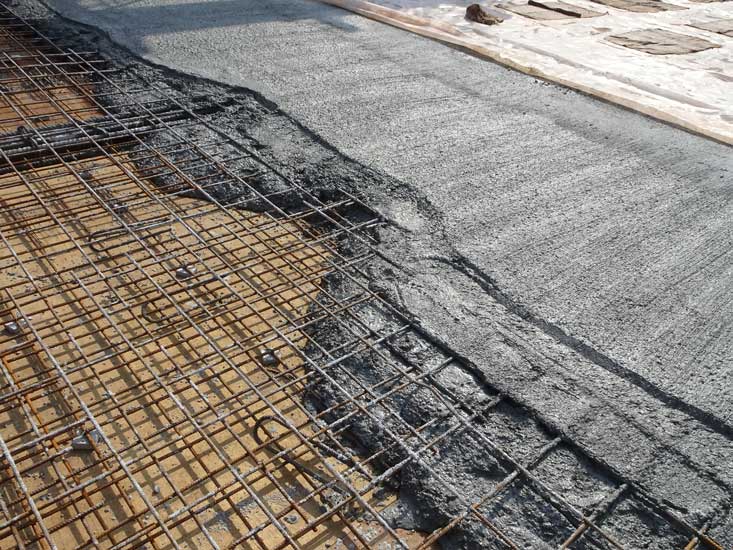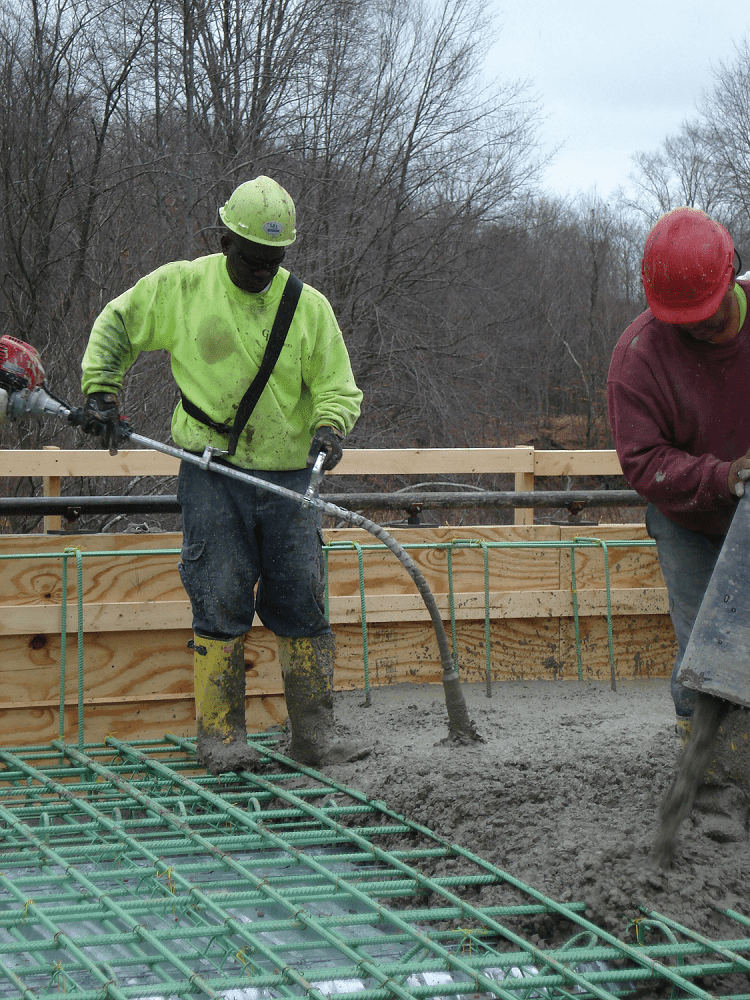Everything You Need to Know About West Coast General Engineering commercial concrete Rancho Cucamonga for Local Builds
The Vital Role of Concrete Structure in Structural Stability and Long Life
When it pertains to developing a home, the foundation is more critical than you could assume. Concrete foundations give unparalleled strength and durability, guaranteeing your structure can hold up against different environmental difficulties. Without a strong base, you risk possible problems like moving or fracturing, which can endanger security and value. Comprehending the nuances of concrete foundations can be the trick to preserving your investment for several years ahead. What should you think about next?
Recognizing the Relevance of Concrete Foundations
Concrete structures are important to the overall stability of any kind of framework, as they provide the important support needed to hold up against different loads and ecological problems. When you think of constructing a home or an industrial space, the structure is the very first thing you must think about. It acts as an obstacle against dampness, safeguarding your residential property from water damage. A well-placed concrete structure also protects against settling and moving, which can lead to fractures in wall surfaces and floors. You'll intend to ensure that the structure is correctly made and strengthened, as this affects the durability of your building. Furthermore, a strong foundation can boost energy effectiveness by reducing air leaks. Bear in mind, overlooking the relevance of a concrete structure can result in expensive repairs down the line. Spending in a quality foundation upfront is crucial for the integrity and toughness of your framework.
Benefits of Concrete Structures for Architectural Integrity
While numerous aspects add to a building's structural stability, concrete structures supply unequaled sturdiness and toughness. You'll value that concrete can stand up to extreme weather, resisting both moisture and temperature changes. This durability indicates your framework is much less most likely to experience fracturing or shifting over time, which can compromise its safety.Additionally, concrete's fundamental weight offers a solid base, stopping motion throughout all-natural events like earthquakes or floods. When you choose a concrete foundation, you're also selecting low maintenance; unlike timber, it will not rot or attract parasites, conserving you time and cash in repairs.Moreover, concrete's fire resistance uses included security, ensuring your structure can endure high temperatures without substantial damages. Generally, buying a concrete foundation implies you're prioritizing the long-term security and stability of your building, making it a wise choice for any kind of building and construction task.
Usual Sorts Of Concrete Foundations
When it concerns building structures, recognizing the usual kinds of concrete structures can assist you make informed selections for your task. The most prevalent kinds include slab-on-grade, crawl space, and complete basement foundations.A slab-on-grade foundation is a basic, economical choice, where a thick concrete piece is put directly on the ground. This kind works well in cozy environments, as it reduces warmth loss.Crawl area foundations boost the home somewhat over ground, enabling for ventilation and accessibility to plumbing and electric systems. This design can aid stop moisture issues.Full cellar foundations use additional living or storage room while offering excellent architectural assistance. They need even more excavation and are normally used in chillier climates to stop frost heave.
Factors to Take Into Consideration When Designing a Concrete Structure

Best Practices for Putting Up Concrete Foundations
When you're installing a concrete structure, correct site prep work is necessary to assure stability (WCGE commercial concrete). You'll likewise require to understand reinforcement strategies to enhance stamina and resilience. Lastly, do not overlook the treating procedure, as it plays a fundamental role in accomplishing a strong structure
Website Prep Work Value
Although it might appear simple, appropriate site prep work is vital for assuring a solid and resilient concrete structure. Begin by clearing the location of any kind of particles, greenery, or organic product that might compromise the structure's stability. Next off, evaluate the soil kind and compaction; you may need to excavate or include materials to develop a stable base. Degree the ground to assure also weight distribution and stay clear of clearing up problems later on. Mounting appropriate drain systems is additionally vital to avoid water buildup, which can compromise the foundation in time. Mark out the foundation's measurements properly to guide the pouring procedure. By adhering to these steps, you'll set the phase for an effective concrete structure that stands the test of time.
Reinforcement Methods Explained
When the website is properly prepared, the next action in assuring a tough concrete foundation involves carrying out reliable support strategies. You should start by utilizing steel rebar, which supplies tensile toughness and assists protect against breaking. Lay the rebar in a grid pattern, seeing to it it's elevated utilizing spacers to keep proper protection. In addition, take into consideration using cable mesh for added support, specifically in locations based on hefty lots. Do not neglect to link the rebar junctions safely with cable. For bigger foundations, fiber reinforcement can enhance sturdiness, minimizing the danger of shrinking cracks. Always follow neighborhood building regulations and standards to make sure conformity. By using these reinforcement techniques, you'll significantly improve your structure's stamina and durability, laying a solid groundwork for your structure.
Healing Refine Basics
To assure your concrete structure remedies correctly, it's essential to keep ample dampness and temperature level conditions promptly after putting. Beginning by covering the surface area with a damp burlap or plastic sheeting to maintain dampness. This maintains the concrete hydrated, avoiding cracks and making certain toughness. You must likewise monitor the temperature level; suitable treating conditions are in between 50 ° F and 90 ° F. If it's as well warm, mist the surface frequently to avoid quick dissipation. For winter, take into consideration utilizing insulating blankets to keep heat. Go for a treating period of at the very least seven days, as this is vital for optimum stamina development. By following these ideal methods, you'll enhance your structure's resilience and long life, guaranteeing architectural stability for years ahead.
Maintenance of Concrete Structures for Durability
To keep your concrete structure strong and enduring, regular assessments are important. You need to also assure useful link reliable drain solutions remain in place to avoid water damage. If you find any kind of splits, addressing them without delay will save you from larger problems down the line.

Routine Evaluations and Evaluations
While routine assessments and evaluations may feel like a job, they're necessary for preserving the integrity of your concrete structure. By consistently examining for splits, changes, or indications of wear, you can capture possible problems prior to they rise into expensive repairs. Look for any water merging around the foundation or uncommon settling, as these can indicate underlying troubles. It's additionally a good idea to check any kind of modifications in your home's structure, like doors that stick or home windows that do not open smoothly. Maintaining a record of your assessments helps track adjustments in time, enabling positive upkeep. Ultimately, these analyses ensure your foundation continues to be stable, sustaining the longevity and security of your whole structure. Do not forget this vital aspect of homeownership!
Reliable Drain Solutions
Regular examinations can reveal problems like water drainage troubles that may compromise your concrete structure's stability. To stop water build-up, guarantee your rain gutters and downspouts direct water far from the structure. Installing French drains can successfully reroute surface area and groundwater, decreasing stress on your structure walls. Furthermore, rating the dirt around your home helps ensure that water streams away, as opposed to merging near your foundation.Consider using sump pumps in areas susceptible to flooding, as they actively eliminate excess water. Regularly inspect for clogs in drain systems and clear them without delay. You'll protect your structure's honesty and long life by taking these aggressive measures. Keep in mind, reliable drainage options are essential for preserving a solid, sturdy concrete structure.
Motivate Split Services
When you notice fractures in your concrete structure, resolving them promptly is important for preserving its long life. Small cracks can promptly advance right into bigger concerns, compromising the structural stability of your home. On a regular basis inspect your foundation for signs of damage, such as horizontal or upright fractures. If you find any, do not wait-- fix them immediately. You can use epoxy injections or concrete patching compounds, which work for sealing fractures. Always follow the manufacturer's guidelines and take into consideration getting in touch with a specialist for substantial damages. Bear in mind, prompt repair services not just improve your foundation's toughness yet likewise save you cash over time by stopping a lot more substantial repair services down the line. Remain proactive, and your foundation will certainly continue to be solid and safe.
Attending To Typical Issues With Concrete Structures
Concrete structures can deal with different issues in time, making it crucial to identify and resolve them immediately. One of one of the most usual issues is breaking, which can occur as a result of temperature fluctuations or clearing up dirt. If you notice splits, it's vital to evaluate their size and deepness; little cracks can usually be secured, while larger ones might require specialist evaluation.Water invasion is another significant issue. Excess moisture can cause mold development Check Out Your URL and structural deterioration. Assurance proper water drainage around your foundation to minimize this danger. In addition, try to find signs of moving or bowing walls, as this can suggest underlying concerns with your foundation's stability.Regular examinations are essential to capture these problems early. If you detect any worrying signs, don't wait to seek advice from a tree bark concrete stamp structure professional. By remaining proactive, you can preserve the honesty and longevity of your concrete structure, guaranteeing your home stays secure and protected.
Regularly Asked Inquiries
Just How Does Dirt Kind Affect Concrete Foundation Efficiency?
Dirt type significantly influences concrete structure performance. If you've obtained large clay, for example, it can trigger moving and fracturing. Sandy soil may cause resolving. Understanding your soil assists assure a secure foundation.
Can Concrete Foundations Be Repaired if Damaged?
Yes, you can repair broken concrete foundations. Depending upon the extent of the damage, strategies like epoxy shot or slab jacking can restore security. It's best to seek advice from an expert for effective solutions.
What Is the Regular Life Expectancy of a Concrete Foundation?
A concrete foundation normally lasts 30 to 100 years, relying on aspects like soil problems, climate, and upkeep. You'll desire to keep an eye on it to assure it remains in good shape throughout its lifespan.
Are There Alternative Materials to Concrete for Foundations?
Yes, there are choices to concrete for structures, like steel, hardwood, or also recycled products. Each alternative has special advantages and disadvantages, so you ought to consider your job's particular needs when choosing the right product.
Just How Does Environment Effect Concrete Foundation Resilience?
Climate greatly influences concrete structure toughness (West Coast General Engineering Concrete). Severe temperature levels, moisture, and freeze-thaw cycles can damage the product, resulting in splits and architectural issues. You need to think about local environment conditions when intending your foundation to assure long-lasting performance